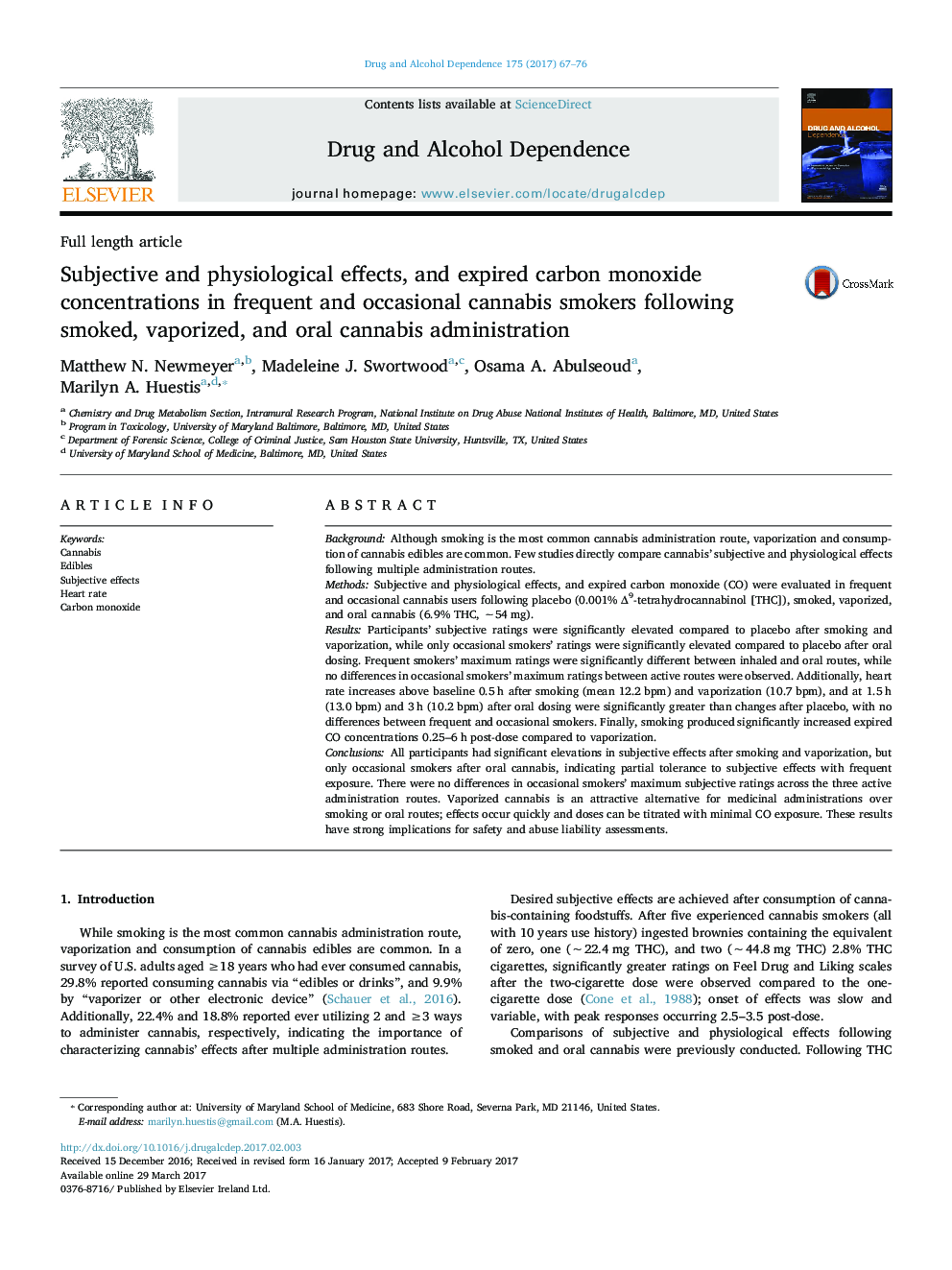| کد مقاله | کد نشریه | سال انتشار | مقاله انگلیسی | نسخه تمام متن |
|---|---|---|---|---|
| 5120068 | 1486116 | 2017 | 10 صفحه PDF | دانلود رایگان |
- Subjective effects were similar after smoked and vaporized cannabis.
- Oral cannabis significantly increased subjective ratings in occasional smokers only.
- Frequent smokers showed partial tolerance to subjective effects after oral dosing.
- Maximum heart rate increases were not significantly different between active routes.
- Smoking significantly increased CO exposure compared to vaporization.
BackgroundAlthough smoking is the most common cannabis administration route, vaporization and consumption of cannabis edibles are common. Few studies directly compare cannabis' subjective and physiological effects following multiple administration routes.MethodsSubjective and physiological effects, and expired carbon monoxide (CO) were evaluated in frequent and occasional cannabis users following placebo (0.001% Î9-tetrahydrocannabinol [THC]), smoked, vaporized, and oral cannabis (6.9% THC, â¼54Â mg).ResultsParticipants' subjective ratings were significantly elevated compared to placebo after smoking and vaporization, while only occasional smokers' ratings were significantly elevated compared to placebo after oral dosing. Frequent smokers' maximum ratings were significantly different between inhaled and oral routes, while no differences in occasional smokers' maximum ratings between active routes were observed. Additionally, heart rate increases above baseline 0.5Â h after smoking (mean 12.2Â bpm) and vaporization (10.7Â bpm), and at 1.5Â h (13.0Â bpm) and 3Â h (10.2Â bpm) after oral dosing were significantly greater than changes after placebo, with no differences between frequent and occasional smokers. Finally, smoking produced significantly increased expired CO concentrations 0.25-6Â h post-dose compared to vaporization.ConclusionsAll participants had significant elevations in subjective effects after smoking and vaporization, but only occasional smokers after oral cannabis, indicating partial tolerance to subjective effects with frequent exposure. There were no differences in occasional smokers' maximum subjective ratings across the three active administration routes. Vaporized cannabis is an attractive alternative for medicinal administrations over smoking or oral routes; effects occur quickly and doses can be titrated with minimal CO exposure. These results have strong implications for safety and abuse liability assessments.
Journal: Drug and Alcohol Dependence - Volume 175, 1 June 2017, Pages 67-76
